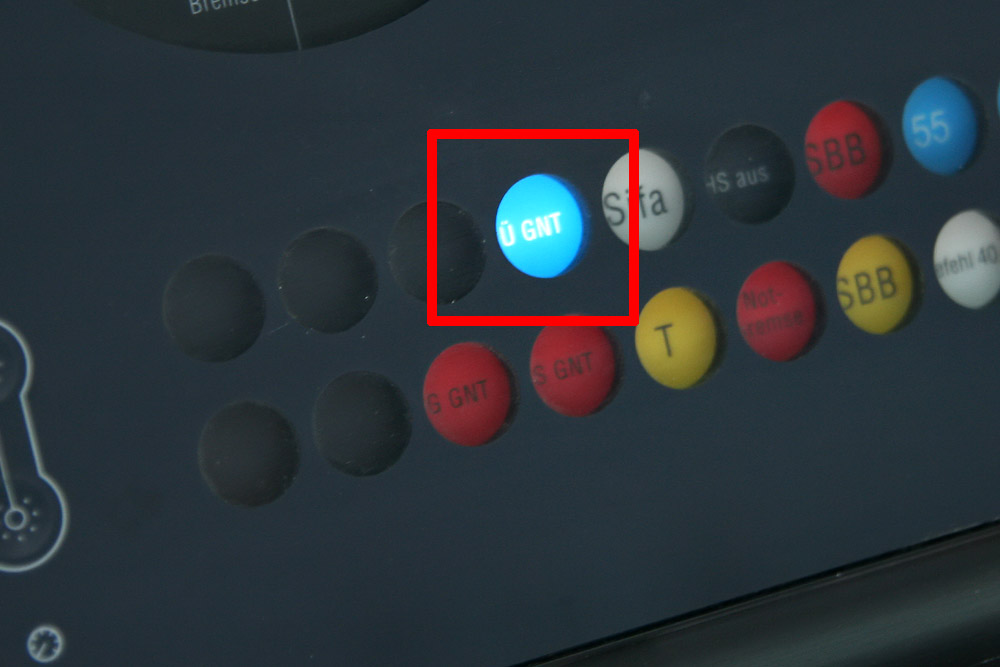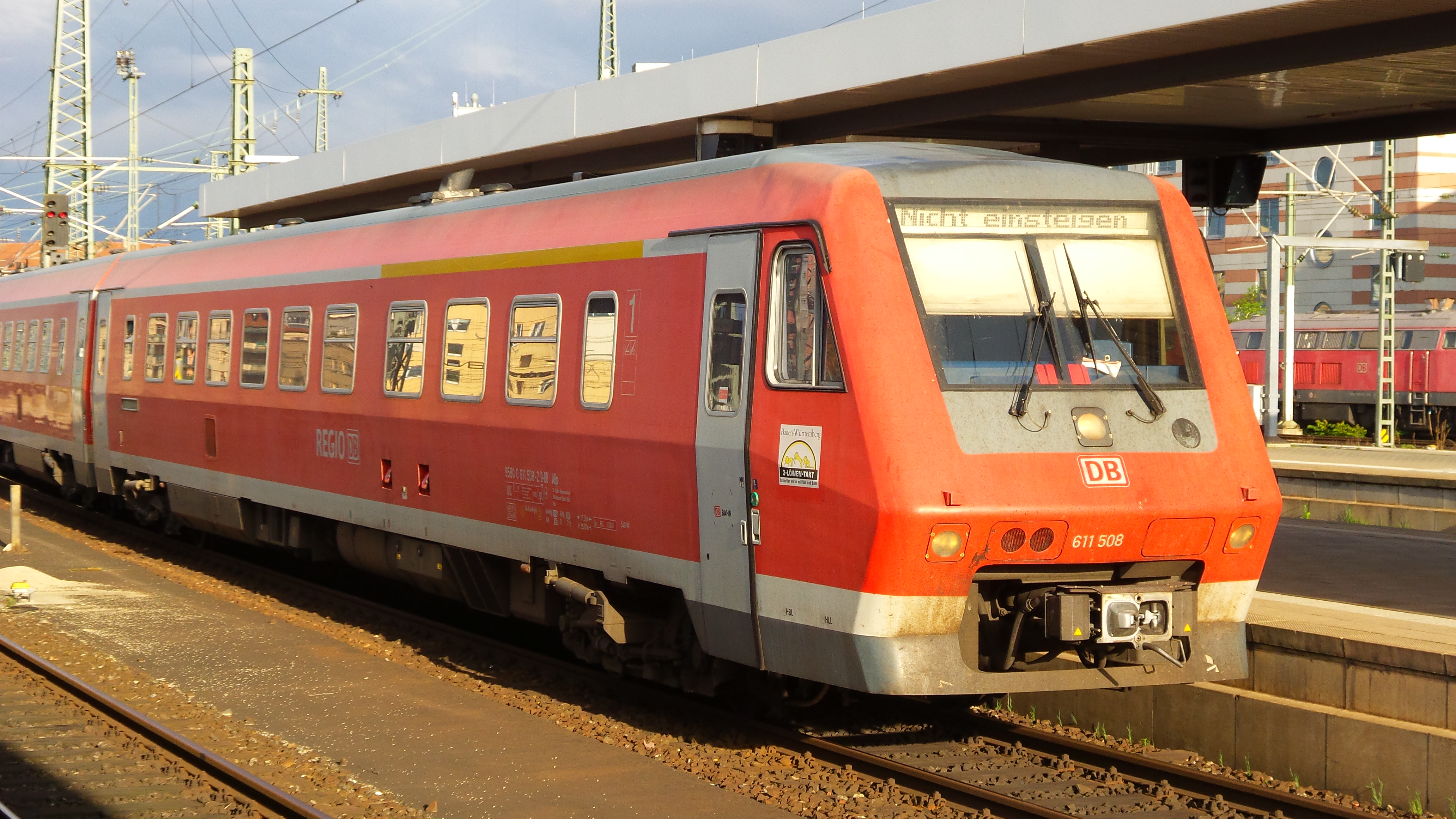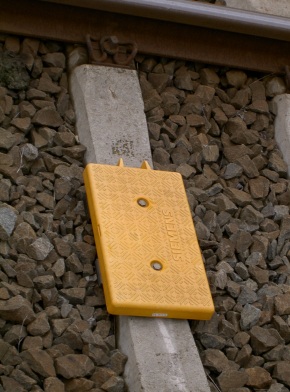|
Geschwindigkeitsüberwachung Neigetechnik
The train protection system Geschwindigkeitsüberwachung Neigetechnik (German, translated "Speed Control for Tilting Technology) (abbr. GNT) enables to rise the speed of tilting trains until 30% above the limits for conventional trains. It is installed on numerous lines in Germany along with the traditional Punktförmige Zugbeeinflussung (PZB) intermittent signalling system. History Prior to GNT the tilting control was added as a subset of the Linienzugbeeinflussung (LZB) train protection system that has been in service on high-speed lines since the 1960s. It turned out that the switch from PZB to LZB on some regional lines was considered to be too expensive. As such Siemens was tasked to provide ZUB balises that would work on top of the existing line side signalling and their PZB controlled restrictions. It was developed and introduced under the title ''Punktförmiges Datenübertragungs-System'' (transl. "Punctiform Data Transfer System"). Because of conflicts of the abbreviat ... [...More Info...] [...Related Items...] OR: [Wikipedia] [Google] [Baidu] |
GNT Leuchtmelder , Wales, Chapman code
{{disambiguation ...
GNT may refer to: * GNT, a Brazilian television channel * ''George Negus Tonight'', an Australian television program * Geschwindigkeitsüberwachung Neigetechnik, a German train safety system * Good News Translation, a Bible translation * Grand National Teams, a North American bridge tournament * Grand National Trunk road, in Eluru, Andhra Pradesh, India * Gendarmerie Nationale Togolaise, a branch of the Togolese armed forces * Guntai language * Gunton railway station, in England * Guntur Junction railway station, in Andhra Pradesh, India * Gwent (preserved county) Gwent is a preserved county and former local government county in southeast Wales. A county of Gwent was formed on 1 April 1974, under the Local Government Act 1972; it was named after the ancient Kingdom of Gwent. The authority was a successor ... [...More Info...] [...Related Items...] OR: [Wikipedia] [Google] [Baidu] |
Deutsche Bahn
The (; abbreviated as DB or DB AG) is the national railway company of Germany. Headquartered in the Bahntower in Berlin, it is a joint-stock company ( AG). The Federal Republic of Germany is its single shareholder. describes itself as the second-largest transport company in the world, after the German postal and logistics company / DHL, and is the largest railway operator and infrastructure owner in Europe. Deutsche Bahn was the largest railway company in the world by revenue in 2015; in 2019, DB Passenger transport companies carried around 4.8 billion passengers, and DB logistics companies transported approximately 232 million tons of goods in rail freight transport. The group is divided into several companies, including ''DB Fernverkehr'' (long-distance passenger), '' DB Regio'' (local passenger services) and ''DB Cargo'' (rail freight). The Group subsidiary ''DB Netz'' also operates large parts of the German railway infrastructure, making it the largest rail network in ... [...More Info...] [...Related Items...] OR: [Wikipedia] [Google] [Baidu] |
DB Netz AG
DB Netz AG is a major subsidiary of Deutsche Bahn that owns and operates a majority of the German railway system (2019: 33,291 km). It is one of the largest railway infrastructure manager by length and transport volume of its network. The company was established in the course of the second stage of the German rail reform as a subsidiary of Deutsche Bahn AG. DB Netz is headquartered in Frankfurt and it has seven regional divisions ("Regionalbereiche", RB) and a central division. The locations of its regional headquarters are Berlin (RB east), Frankfurt (RB central), Duisburg (RB west), Hanover (RB north), Karlsruhe (RB southwest), Leipzig (RB southeast) and Munich (RB south). DB Netz AG is profitable from route fees but receives extensive public funding for maintaining, developing and extending the network of European and federal transportation routes. It was included in the brand DB Netze when Deutsche Bahn was reorganised into three major divisions covering passengers, ... [...More Info...] [...Related Items...] OR: [Wikipedia] [Google] [Baidu] |
ICE T
DBAG Class 411 and Class 415 are German tilting electric multiple-unit high-speed trains in service with DB Fernverkehr, commonly known as ICE T. Development Following the successful inauguration of the Intercity-Express system in 1991 and the order to develop the ICE 2, in 1994 DB started plans to upgrade long-distance services using conventional lines, with higher speeds and a comfort level close to the ICE standard, using tilting electric multiple units to replace locomotive-hauled InterCity (IC) and InterRegio (IR) trains. DB assigned the name ''IC T'' to the project, with "T" standing for ''Triebzug'' (multiple unit). Later, Deutsche Bahn also saw the need for a similar new train for its non-electrified routes, and started the ''ICT-VT'' project, with "VT" standing for ''Verbrennungstriebwagen'' (internal combustion motor car). This development resulted in the diesel-powered ICE TD. Deutsche Bahn developed the ICE 3, IC T and ICT-VT projects in parallel. T ... [...More Info...] [...Related Items...] OR: [Wikipedia] [Google] [Baidu] |
ICE TD
The DBAG Class 605, commonly known as the ICE TD is a high-speed diesel multiple unit (DMU) train, formerly in service with Deutsche Bahn and DSB. History Development Following the successful inauguration of the Intercity-Express system in 1991 and the order to develop the ICE 2, in 1994 DB started plans to upgrade long-distance services using conventional lines, with comfort level raised near the ICE standard and higher speeds, with tilting electric multiple units to replace locomotive-pulled InterCity (IC) and InterRegio (IR) trains. DB assigned the name ''IC T'' to the project, with "T" standing for ''Triebzug'' (multiple unit). This development resulted in the ICE T. Later, Deutsche Bahn also saw the need for a similar new train on its non-electrified routes, and started the ''ICT-VT'' project, with "VT" standing for ''Verbrennungstriebwagen'' (internal combustion motor car). Deutsche Bahn pursued the development of the ICE 3, IC T and ICT-VT projec ... [...More Info...] [...Related Items...] OR: [Wikipedia] [Google] [Baidu] |
ICE T
DBAG Class 411 and Class 415 are German tilting electric multiple-unit high-speed trains in service with DB Fernverkehr, commonly known as ICE T. Development Following the successful inauguration of the Intercity-Express system in 1991 and the order to develop the ICE 2, in 1994 DB started plans to upgrade long-distance services using conventional lines, with higher speeds and a comfort level close to the ICE standard, using tilting electric multiple units to replace locomotive-hauled InterCity (IC) and InterRegio (IR) trains. DB assigned the name ''IC T'' to the project, with "T" standing for ''Triebzug'' (multiple unit). Later, Deutsche Bahn also saw the need for a similar new train for its non-electrified routes, and started the ''ICT-VT'' project, with "VT" standing for ''Verbrennungstriebwagen'' (internal combustion motor car). This development resulted in the diesel-powered ICE TD. Deutsche Bahn developed the ICE 3, IC T and ICT-VT projects in parallel. T ... [...More Info...] [...Related Items...] OR: [Wikipedia] [Google] [Baidu] |
DBAG Class 612
The DBAG Class 612 is a two car, tilting, diesel multiple unit operated by the Deutsche Bahn for fast regional rail services on unelectrified lines. General information The Class are a two car tilting DMU built between 1998 and 2003 by Adtranz in Hennigsdorf which later became Bombardier Transportation. The class are also known as RegioSwingers. They were developed to replace the problematic DB Class 611. The sets worked fine between 1998 and 2004 until cracks were detected in a number of wheelsets and so the tilting system was disabled and curves on lines had to have reduced speed limits, which affected the timetables and connections. From 2005 the trains had the wheelsets replaced and the tilting system was back up and running. The maximum tilt is 8°. After ICE TD class 605 was grounded due to a fracture of an axle in one unit, it was replaced by class 612 on the Dresden-Munich line 2003, as replacement by anything other than a tilting DMU would have meant an extension o ... [...More Info...] [...Related Items...] OR: [Wikipedia] [Google] [Baidu] |
DB Class 611
The DBAG Class 611 is a two car, tilting, diesel multiple unit operated by Deutsche Bahn for fast regional rail services on unelectrified lines. General information Class 611, successor to the DB Class 610, was developed using tilting systems from German military technology in favour of the Hydraulic Fiat systems used by its predecessor Because of environmental concerns over the potential hazards of leaking hydraulic fluid an electrically actuated option based on equipment used to keep the guns of tanks level while traversing uneven terrain was used. The Class 611 suffered teething troubles following its entry into service just two years after the contract was awarded and was largely considered a failure. However, 40 are still in use as of November 2015. Tilting technology issues The trains came into service in 1996 and by March 1997 the first problems with the tilting technology occurred. The Federal Railway Authority limited the Class 611 to 120 km/h and required the ... [...More Info...] [...Related Items...] OR: [Wikipedia] [Google] [Baidu] |
Radio Block Center
Radio is the technology of signaling and communicating using radio waves. Radio waves are electromagnetic waves of frequency between 30 hertz (Hz) and 300 gigahertz (GHz). They are generated by an electronic device called a transmitter connected to an antenna which radiates the waves, and received by another antenna connected to a radio receiver. Radio is very widely used in modern technology, in radio communication, radar, radio navigation, remote control, remote sensing, and other applications. In radio communication, used in radio and television broadcasting, cell phones, two-way radios, wireless networking, and satellite communication, among numerous other uses, radio waves are used to carry information across space from a transmitter to a receiver, by modulating the radio signal (impressing an information signal on the radio wave by varying some aspect of the wave) in the transmitter. In radar, used to locate and track objects like aircraft, ships, spacecraft and ... [...More Info...] [...Related Items...] OR: [Wikipedia] [Google] [Baidu] |
European Train Control System
The European Train Control System (ETCS) is the signalling and control component of the European Rail Traffic Management System (ERTMS). It is a replacement for legacy train protection systems and designed to replace the many incompatible safety systems currently used by European railways. The standard was also adopted outside Europe and is an option for worldwide application. In technical terms it is a type of positive train control (PTC). ETCS is implemented with standard trackside equipment and unified controlling equipment within the train cab. In its advanced form, all lineside information is passed to the driver wirelessly inside the cab, removing the need for lineside signals watched by the driver. This will give the foundation for a later to be defined automatic train operation. Trackside equipment aims to exchange information with the vehicle for safely supervising train circulation. The information exchanged between track and trains can be either continuous or int ... [...More Info...] [...Related Items...] OR: [Wikipedia] [Google] [Baidu] |
Eurobalise
A Eurobalise is a specific variant of a balise being a transponder placed between the rails of a railway. These balises constitute an integral part of the European Train Control System, where they serve as "beacons" giving the exact location of a train as well as transmitting signalling information in a digital telegram to the train. Overview A balise typically needs no power source. In response to radio frequency energy broadcast by a (BTM) mounted under a passing train, the balise transmits information to the train ('Uplink'). The provisions for Eurobalises to receive information from the train ('Downlink') has been removed from the specification. The transmission rate is sufficient to transmit at least 3 copies of a 'telegram' to be received by a train passing at any speed up to 500 km/h. Eurobalises are typically placed in pairs on two sleepers in the center of the track. For ETCS they are typically spaced 3 metres apart. With the balises being numbered the train will ... [...More Info...] [...Related Items...] OR: [Wikipedia] [Google] [Baidu] |
Train Protection System
A train protection system is a railway technical installation to ensure safe operation in the event of human error. Development Train stops The earliest systems were train stops, as still used by the New York City Subway, the Toronto subway, the London Underground, the Moscow Subway (only on the older lines) and the Berlin S-Bahn. Beside every signal is a moveable arm. If the signal is red, levers connected to valves on any passing train hit the arm, opening the brake line, applying the emergency brake, If the signal shows green, the arm is turned away from the levers and there is no contact. The Great Western Railway in the UK introduced its 'automatic train control' system in the early years of the 20th century. Each distant signal had before it a ramp between the running rails. If the signal showed green, the ramp was energised with a low voltage current which was passed to the locomotive when a shoe came into contact with the ramp. A bell rang in the locomotive's cab t ... [...More Info...] [...Related Items...] OR: [Wikipedia] [Google] [Baidu] |








